LCDR Joe Dwigans, U.S. Navy – From an Iowa Dairy Farm to Flying Navy Helldivers
The naval aviator training pipeline is grueling. It takes months of study to learn the basics of flying. It takes strength of body and mind to withstand the physical and mental strains of landing a plane on the pitching deck of an aircraft carrier at sea. Most of all, it takes courage, to launch from a ship in the middle of the ocean in search of a target with the hope of accomplishing the mission and returning home safely. Few have what it takes to even try to meet naval aviation’s high standards and even fewer succeed. At the height of World War II, with the naval war against Japan raging in the Pacific, Lieutenant Commander Joe Dwigans, U.S. Navy (Retired), raised his hand and said I can do it. This is his story.
Joe was born in his parents’ farmhouse in Stuart, Iowa, in 1921, the oldest of three children. His father had been drafted into the Army near the end of World War I and was on his way to Europe in a troop ship when the war ended. The ship turned around and Joe’s father made his way back to Iowa where he married Joe’s mother and started a family. In 1927, he accepted a job at the Veterans Administration (VA) Hospital in Knoxville, Iowa, and moved Joe and the rest of the family there. They lived on a farm and after a while, a friend asked Joe’s father to keep a dairy cow for him so the friend’s family would have a supply of fresh milk. He took the opportunity and ran with it, eventually growing the herd to thirty dairy cows. The family’s dairy farm supplied fresh milk to lots of families in the Knoxville area.
The dairy farm kept the entire family busy, even during the lean years of the Great Depression. In addition to helping take care of the cows, Joe earned twenty-five cents a week from a paper route, which he kept all through high school. For that meager sum, Joe could attend a cowboy show at the movies on Saturday, pay for popcorn and a Snickers bar at the show, and still put five cents away so he could say he wasn’t broke.
Even more profitable was a rabbit business Joe and his dad ran in conjunction with Joe’s paper route. Joe’s father raised the rabbits on the farm and had them stacked in cages six high. As the rabbits got older, their cages worked their way up from ground level until they reached the top of the stack, indicating the rabbits were ready to sell. On his paper route during the week, Joe took orders from his customers for the rabbits. On Friday night, he delivered rabbit filets wrapped in wax paper to his waiting customers. Joe also hunted squirrels for his mother. She would tell him how many she needed, and Joe and his dog would bring them back in time for dinner.
Another aspect of Joe’s paper route had longer-term consequences. The newspaper operated an autogyro – a fixed wing propeller-driven plane with an overhead rotor like a helicopter – which it used to get around the state to cover stories. When the autogyro was in Knoxville, the newspaper boys went to see it. On one such occasion, the pilot offered Joe a ride. He took it and from that moment on, he set his eyes on flying.

Besides his paper route and helping with the family dairy farm, Joe attended school, eventually going to Knoxville High School. Although he was in excellent shape from working on the farm, he was too small to play sports. Still, he wanted to letter, so he convinced the football coach to let him be the team manager. Although his title sounded fancy, what it really meant was he had to do all the dirty work for the team. And, as if that wasn’t enough, he worked as a clerk at J.C. Penney’s Department Store in Knoxville.
Joe graduated from Knoxville High School in May 1939 and enrolled at the University of Iowa in Iowa City in the fall. He took aptitude tests to see what he should study, but none came back with clear guidance, so he registered for general classes. To pay for his room and board, he worked at the university hospital, busing food to the polio wards. To earn spending money, he asked his former boss at the J.C. Penney store in Knoxville for a recommendation so he could apply for a job at the J.C. Penney store in Iowa City. The recommendation worked because when he went for an interview, the Iowa City store manager simply asked him when he could start. Thereafter, he worked at the Iowa City store whenever he had free time.
In September 1939, war broke out in Europe with the Nazi invasion of Poland. When Germany invaded France in May 1940, Joe’s father saw the writing on the wall. He told Joe to come home after finishing his freshman year to work on the dairy farm until he was drafted. Japan’s attack on Pearl Harbor plunged America into the war in December 1941, but it wasn’t until November 1942 that Joe finally received his draft notice in the mail.
In December, Joe reported as directed to the community hall in Knoxville, together with the other local men who had received draft notices. Joe stood in line until they called his name. At the first desk, they asked him whether he wanted to go Army or Navy. Having spent far too much time toiling in the mud and dirt on the dairy farm, he chose Navy. He then walked to the Navy desk, where they offered him various service options. Recalling his ride on the newspaper’s autogyro, Joe said he would like to give flying a try. Thus began Joe’s journey to becoming a naval aviator.
Joe’s first stop was the Naval Flight Preparatory School at Cornell College in Mt. Vernon, Iowa, a small town about 125 miles northeast of Knoxville. The Navy directed him to report to the school in the spring of 1943, where he joined other officer candidates hoping to become naval aviators. The new arrivals lived in one of the college’s dorms and ate their meals together at Bowman Hall. The training, which lasted about three months, indoctrinated the men into the Navy and placed a heavy emphasis on physical fitness. The training was rigorous and designed to begin weeding out those who could not deal with the physical and mental stress associated with being a pilot in combat. Any candidates not meeting the requirements were dropped from the program and sent to boot camp to become enlisted sailors.
In addition to the physical training, Joe and the other candidates attended classes to learn the basics about being an officer and did lots of drills and marching. While Joe was in excellent physical shape, he found himself competing against many college athletes who wanted to be pilots, too. He roomed with three other men in a dormitory room, one of whom had attended a military school before being drafted. He drilled Joe and the other two roommates until they became experts. During a competition that pitted Joe and his roommates against teams from the other four-man rooms, they took first place. The recognition was fleeting, as the next day they were back to their normal routine of classroom training, drills, and physical fitness.
After successfully completing the Naval Flight Preparatory School at Cornell College, Joe and his fellow officer candidates transferred to a small college near Safford, Arizona, for initial flight training. They learned to fly in civilian aircraft like the Piper Cub, often flying twice each day. The training assessed the candidates’ aptitude for flying and, like the Naval Flight Preparatory School before, weeded out those not suited for the cockpit. The big cut occurred when it came time to solo, with the candidates flying without their instructors for the first time. Joe enjoyed flying and did well, allowing him to advance.
Joe next reported to Pre-Flight School at Saint Mary’s College in Moraga, California, a small town in the San Francisco Bay area. This training emphasized physical fitness and teamwork. To develop these attributes, Joe and the other men participated in team sports, primarily football. The Navy chose football because it was a physical sport with lots of contact, helping build in all the candidates the toughness they needed to meet and defeat their enemies in combat. Again, Joe’s smaller build proved a disadvantage, particularly on the gridiron. Fortunately, the San Francisco Bay area fog proved an unwitting ally. During one morning football game, a dense fog rolled in over the field. The fog was so thick, the players could hardly see each other even though they were standing right next to one another. When Joe took his position on the line, he saw he stood opposite Bruce Smith, an All-American football player from the University of Minnesota. Knowing he was about to be crushed, Joe dropped to the ground as soon as the center snapped the ball. No one saw him because of the fog, and he lived to play another day.
The Pre-Flight Training swimming requirements proved another challenge for Joe. Coming from central Iowa, he never learned to swim. He was not alone, because about thirty percent of his fellow officer candidates couldn’t swim either. To avoid being washed out of the program, they had to learn to swim and survive in the water. As an added incentive, if they did not pass their swim requirements for the week, they could not go on weekend liberty in San Francisco. This forced Joe to stay on campus on more than one weekend doing remedial swimming until he could satisfy the requirements.
Although the swimming requirements kept Joe from going out on the town, he found another way to have fun. By coincidence, an old girlfriend of his from Knoxville High School had moved to San Francisco, so he gave her a call. He told her although he could not go off campus, she could visit him. And, if she brought a carload of girls for his friends, that would be even better. She obliged, and she and her friends came to St. Mary’s for dances with Joe and the other candidates unable to go on liberty. As a result, both Joe and his former girlfriend became very popular.
Another way to get off campus was the Glee Club, which periodically performed around the local area. Joe decided to give it a try and auditioned for a spot. The director allowed him to join provided he promise not to sing a word out loud. Joe readily agreed and got the opportunity to go with the club on one of its performances. The best part was, a family in Oakland hosted him for a home-cooked meal and he had an amazing view of San Francisco from their house.
When Joe was able to go on weekend liberty with his buddies, they usually had little money to spend and could not afford to pay for a hotel room. The Hotel Leamington in Oakland, California, came to the rescue by opening its second floor to the officer candidates at no cost. The downside was they didn’t get rooms – they had to sleep in their uniforms wherever they could find an open space. That was all they needed, and the Hotel Leamington became their base of operations whenever they went in town.
Although the pre-flight training at St. Mary’s focused on physical fitness and team building, there was also an important classroom segment. Joe and the other candidates learned the basics of naval aviation, seamanship, communications, and aircraft and ship recognition. At the conclusion of the program, they were finally ready to learn to fly military aircraft.
After Pre-Flight School, Joe transferred to Naval Air Station Livermore, California, for Intermediate Training. This fourteen-week course began at NAS Livermore and consisted of both ground school and flight training. Joe learned the basics of flying in the two-seat Stearman Model 75 biplane, which he and the other candidates dubbed the “yellow peril” because of its bright yellow paint job and the inexperience of the students flying it.
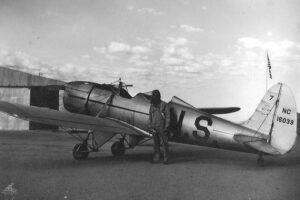
Once he’d mastered the Stearman, Joe moved on to the next phase of Intermediate Training at Naval Air Station Corpus Christi. This phase involved more advanced training in the North American SNJ trainer, known as the “Texan” by Army-Air Corps pilot trainees. Joe spent many hours flying the SNJ around south Texas, including over the vast King’s Ranch. He practiced take-offs and landings at outlying fields around Naval Air Station Corpus Christi and learned to fly with instruments rather than just visual flight rules. This phase of the training had a thirty-percent attrition rate, as it was the final cut before the candidates earned their wings. For Joe’s final check ride, he was dismayed to see his evaluator was “Down-Check Charlie”, who was notorious for failing pilots on their final rides. Although Joe was sure he flew an acceptable ride, he became another of Down-Check Charlie’s victims and didn’t pass.
Disappointed with the result, Joe spoke to one of his instructor advisors. The instructor asked him what happened, and Joe said he thought he had done okay. While they were talking, the instructor noticed Joe wearing a Masonic ring and asked him about it. Joe said he had recently been inducted. After the conversation, Joe got a second check ride with another instructor and passed with flying colors.
Joe and his fellow aviation candidates finally earned their pilot’s wings and were commissioned ensigns (O-1) in the U.S. Naval Reserve upon completion of their fourteen-week Intermediate Training. When Joe and the other new ensigns returned to their barracks after the commissioning ceremony, they found a Navy Chief (E-7) waiting for them with a can of polish and a rag for each of them. He told them to go to their rooms and polish the doorknobs until they shined enough to pass inspection. It was a not-so-subtle reminder to keep the new naval aviators from becoming too full of themselves.
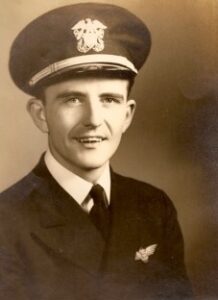
After spending the better part of the last year together, the new officers went their separate ways. Their next task was to learn to fly the Navy’s combat fighters, dive bombers, and torpedo planes in preparation for battle against the Japanese fleet in the Pacific war. When Joe and his friends were asked what type of aircraft they wanted to fly, their first choice was the scout and spotter planes launched from battleships to help pinpoint targets for the ships’ big guns. They thought being one of only two or three pilots on the battleship, they would be a big deal. No one received that assignment. Instead, Joe was designated to fly the Curtiss SB2C “Helldiver”, the next generation dive bomber after the Douglas SBD “Dauntless”, made famous during the Battle of Midway by sinking four Japanese aircraft carriers.
Joe transferred to Naval Air Station Jacksonville on the coast of northeast Florida to learn to fly the Helldiver. Since he would eventually take off and land his plane from aircraft carriers at sea, he had to learn to navigate over open ocean with no reference points to help him get his bearings. This meant being able to look at the wave tops to estimate windspeed and direction so he could take them into account when plotting his course on the plotting board in the cockpit. He also had to learn to fly a triangular course that would take him to his target and bring him back to his starting point where he could land safely. To make the calculations more difficult, if his starting point was an aircraft carrier and the destination was enemy ships, both would be moving, so a course had to be plotted to where he thought the ships would be in the future, not where they were at the start of the mission. If Joe made a mistake, the consequences could prove deadly, because arriving at the wrong place could leave him with little fuel and nowhere to land. As one pilot Joe knew said, “I got lost once and made damn sure I never did again.”
On one occasion, Joe flew his Helldiver out over the ocean with a foreign pilot flying another plane. They flew into a bank of fog so dense Joe could not see the other pilot’s aircraft. He was also unable to contact the pilot by radio. Joe completed the training flight and returned to the airfield, only to find the foreign pilot waiting for him. He had decided to return to base rather than fight the fog. The flight proved the importance of being able to fly on instruments, rather than relying on only what Joe could see. Without his instruments telling him where he was, he could have become disoriented and flown his plane into the sea.
On another occasion, Joe and his fellow pilots went to the officers’ mess to get some lunch before their afternoon flight. Joe didn’t like the looks of the chicken concoction the cooks had put together, so he passed on the meal. Once all the planes got into the air and started forming up, the pilots began vomiting in their cockpits and scrambled to land as they became deathly ill from food poisoning. When Joe landed and saw the condition of the other pilots and their planes, he was glad he had decided to fly hungry.
Joe was also given the opportunity to fly the SBD Dauntless dive bomber, some of which had been brought back to the United States after the Battle of Midway. The pilots were admonished not to dive the planes because they were war weary. Joe volunteered to give the Dauntless a try, and as soon as he reached altitude, he checked the dive flaps and nosed over into a dive – just what he had been told not to do. When he reached what he thought was an appropriate altitude, he started to pull out of his dive. What he didn’t know, though, was that the Dauntless had a “mush” when pulling out of a dive and it used up most of the altitude he had left. When he finally leveled off, he found himself low to the ground and with the mesquite trees passing very close by. It was a lesson he would never forget.
To teach the Helldiver pilots to land on the Navy’s fleet aircraft carriers, which had flight decks less than 850 feet long, the pilots practiced take offs and landings on runways painted with markers simulating the available space on a carrier’s flight deck. Once Joe and the other pilots became comfortable making short take offs and landings, they progressed to taking off and landing on the USS Guadalcanal (CVE-60), an escort carrier with an even shorter flight deck operating off the coast of Florida. To successfully land on the Guadalcanal, Joe had to approach the stern of the ship flying low and slow and then catch the plane’s tailhook on one of three arresting wires crossing the flight deck. Joe’s first landing was particularly unnerving, because when the Landing Signal Officer at the stern of the ship signaled him with his paddles to cut his engine’s power to land, he could no longer see the ship below him. On a leap of faith, he cut power as directed. When his Helldiver caught the arresting wire and it jolted to a safe stop, he knew what to expect going forward. After completing six carrier landings, Joe was designated carrier qualified.
Landing on aircraft carriers wasn’t the only skill Joe needed. To accomplish his mission, he also had to be able to put his plane into a steep dive and drop up to 2,000 pounds of bombs onto an enemy ship zigzagging below at high speed and firing anti-aircraft guns at his plane to destroy it. One of the places Joe practiced dive bombing was on target ships in Lake Michigan. To get there, Joe’s squadron flew their planes from Jacksonville to Naval Air Station Gross Ile, just outside of Detroit. From there, they navigated across the state of Michigan to attack targets on the lake.
During one such practice bombing, Joe’s squadron spotted a ship towing a yellow target vessel. They attacked it with dummy bombs and scored several direct hits, sinking the target. When they returned to the airfield, they were summoned to the tower and told the vessel they sank wasn’t a target – it was a pleasure craft under construction being towed through the target area. Aside from getting chewed out, no one got in trouble because the vessel was not supposed to be in the restricted zone in the first place.
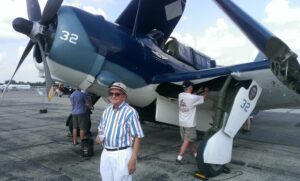
Once their training was complete, Joe’s bombing squadron, VB-75, became operational. It was scheduled to deploy to the Pacific aboard the soon-to-be commissioned Midway-class fleet aircraft carrier USS Franklin D. Roosevelt (CV-42); however, World War II ended with Japan’s formal surrender on September 2, 1945. As a result, Joe and his squadron never flew aboard the carrier or deployed.
Although the war was over, Joe’s flying days were not. His squadron participated in several victory parades, including one over Washington, D.C., where the planes flew in formation down Pennsylvania Avenue at an altitude of just 1500 feet. On another flight out of New York, Joe asked his gunner if he wanted to see anything. His gunner, an enlisted sailor from Tennessee, said it would be nice if they could see the Statue of Liberty. Joe did just that, circling the Statue of Liberty so close it seemed he could reach out and touch it.
When the parades stopped, it was time for Joe to go home. Because he’d been in the Navy since early 1943, he had sufficient demobilization points to be released before the end of 1945. To make his way back to Knoxville, he went in with a pilot friend from Iowa who bought a used car. Together, they made the trip from Jacksonville, Florida, to central Iowa, only to have the car break down an hour outside of town. They were so anxious to get home, they left all their belongings in the car and hitchhiked the rest of the way. They came back the next day and towed the car the remainder of the way, with Joe’s buddy driving the lead car and Joe steering the broken-down vehicle.
Once home, Joe transitioned to civilian life. While he was gone, his parents had sold the family dairy business and purchased an ice cream store in town. Joe cashed in his war bonds and outfitted a freezer truck and made ice cream deliveries to all the surrounding towns. He expanded the ice cream store’s customer base by providing an ice cream freezer free of charge to any store that stocked his family’s ice cream. He expanded even further by making the same deal to schools providing their students with lunches subsidized by the federal government.
The biggest change in Joe’s personal life came in 1948 when he married Betty Rae Grewell. Together, they decided it was time for Joe to finish college. First, Joe took Betty to the University of Iowa in Iowa City, but she was not impressed by the Quonset hut quarters and oil burning stoves. At the suggestion of a friend, they visited the University of Oklahoma in Norman, Oklahoma, and were instantly sold. Using his GI Bill benefits, Joe earned his bachelor’s degree in accounting and stayed an extra year to earn his master’s degree, as well.
Although the GI Bill made his degrees possible, it did not cover all the expenses of his new family. Some of his old flying buddies, who were also at the University of Oklahoma, suggested he fly for the Naval Reserve out of Naval Air Station Dallas. He went to visit and, given his Navy flying experience, was quickly accepted into the Reserves. He flew in a non-pay status for the first three months and thereafter received pay. His Reserve commitment required him to drill one weekend each month and two additional weeks each year. Not only did he make more money in one weekend than he could working all month at a local part-time job at school, but he also got to keep flying, which he loved.
Joe’s service in the Reserves gave him the opportunity to fly all sorts of Navy aircraft. That happened because whenever the active-duty squadrons retired aircraft or received new planes, they sent their excess aircraft to the Reserves. As a result, Joe flew over 500 hours in the venerable Vought F4U Corsair and got to fly the Navy’s first operational jet (the McDonnell FH-1 Phantom) and the Grumman F9F Panther jet fighter. Amazingly, he didn’t attend schools to learn to fly these airplanes. He was simply handed the flight manual and told when he felt ready, he could give the planes a try. Give them a try he did, eventually achieving the milestone of breaking the sound barrier in the F9F. Not only did he fly countless hours around the Dallas/Fort Worth area, but he also flew training missions all around the United States. One of the most memorable of those missions included loitering at a low altitude over San Francisco Bay and watching the city’s lights come on. He can still picture it to this day.
Although Joe loved flying, he decided it was time to stop after a close call in California in 1959. As he was getting ready to take off one morning, his F9F Panther’s engine died. A main fuel line leak caused the failure. The maintenance chief told Joe he was lucky because in every other main fuel line leak he’d seen, the jet had gone up in flames. Joe continued flying for the rest of the fiscal year and then looked for other opportunities in the Reserves.
As for his civilian life, after graduating from the University of Oklahoma, Joe took a job with the accounting firm Arthur Andersen & Company in Dallas, Texas. Now a certified public accountant, he primarily audited oil and gas companies, but found himself traveling a lot. To be able to stay at home with his family, he accepted a position with one of his accounting clients, the Champlin Refining Company in Enid, Oklahoma. After spending three years there, he took a new position with the Trunkline Gas Company out of Houston, Texas, and later shifted to a position with its parent company, the Panhandle Eastern Pipeline Company, in Kansas City, Missouri. After seventeen years with Panhandle Eastern, he worked seventeen more years with the Kansas City Power and Light Company, before finally retiring in 1989.
Joe’s decision to transition away from flying in the Reserves dovetailed with his move to Kansas City. He started drilling at Naval Air Station Olathe, located just twenty miles southwest of Kansas City. Together with men possessing a wide range of backgrounds and talents, he was assigned to a weapons training unit and visited testing sites across the United States. This included nuclear facilities in Illinois, test flight facilities in California, artillery ranges in Colorado, and experimental aircraft testing sites for the McDonald Aircraft Company. Joe stayed in the Reserves until 1971, when he retired as a Lieutenant Commander (O-4).
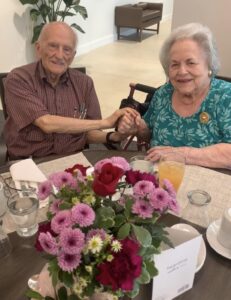
Although Joe retired from the Navy over fifty years ago, his Navy service remains a source of pride and accomplishment. He has been an active member of the Naval Reserve Association, helping sponsor University of Kansas Navy ROTC graduates as they embark on their Navy careers. He’s also been active in the Military Order of the World Wars, sponsoring high school students from the Kansas City area to attend leadership schools in Oklahoma City. He’s also the oldest living naval aviator in the Kansas City chapter of the Association of Naval Aviation.
As if that wasn’t enough, Joe has worked with local civic leaders to sponsor high school students to attend the christening of the USS Harry S Truman (CVN-75), and to ride the nuclear-powered submarine USS Jefferson City (SSN 759). During a Tiger Cruise from Hong Kong to Japan on board the aircraft carrier USS Independence (CV-62) with his son, then-Lieutenant Commander Dean Dwigans, who was assigned as the ship’s judge advocate, Joe presented the ship’s commanding officer with a key to the city of Independence, Missouri. In return, the Commanding Officer presented him with a wooden model of the ship, which Joe gave to the City of Independence. Most recently, Joe participated in a Freedom Flight from Kansas City to Washington, DC, in recognition of his many years of military service to our nation.
Joe now lives with Betty in Kansas City. They have four children, Cathy, JoAnn, Cynthia, and Dean, and multiple grandchildren and great grandchildren spread across the United States.
Voices to Veterans is proud to salute Lieutenant Commander Joe Dwigans, U.S. Navy (Retired), for his many years of distinguished service in the Navy. From pilot training through his time as a carrier-qualified Helldiver pilot, he’s answered our nation’s call. He’s continued his service ever since, not only through the Navy Reserve, but also by introducing countless young adults to possible careers in the Navy. We sincerely thank him for his service and sacrifice, and wish him fair winds and following seas.
If you enjoyed Joe’s story, please sign up for the Voices to Veterans Spotlight monthly newsletter by clicking here. Once each month, you’ll receive a new written veteran’s story and a new podcast directly in your mailbox. Best of all, it’s free and you can unsubscribe at any time.

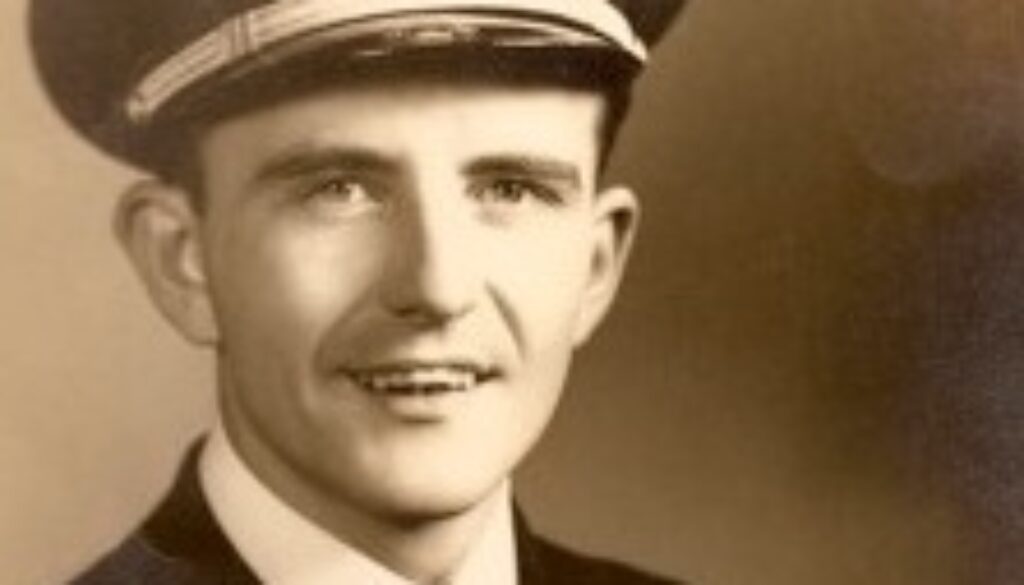

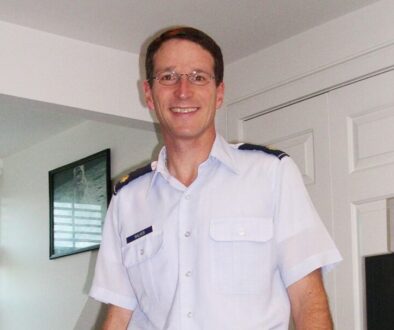
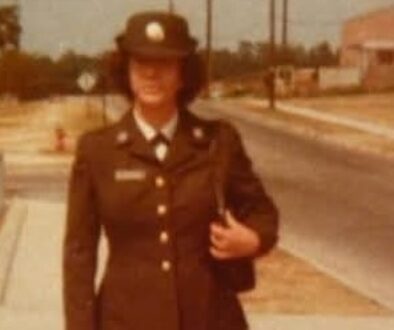
February 18, 2023 @ 2:33 PM
Enjoyed reading Joe’s accomplishments. Thank him for me.
February 18, 2023 @ 3:33 PM
Marilyn – I will do that, and thanks for reading Joe’s story!
February 26, 2023 @ 8:47 AM
I personally know Joe and I can tell you he is was one of the nicest men I have ever met in my life. He gives of himself to everyone. I love this story about his life. Thank you ! George F
February 26, 2023 @ 11:00 AM
George – thanks for reading Joe’s story!
February 27, 2023 @ 3:57 PM
Thanks George! He deeply enjoys your friendship.